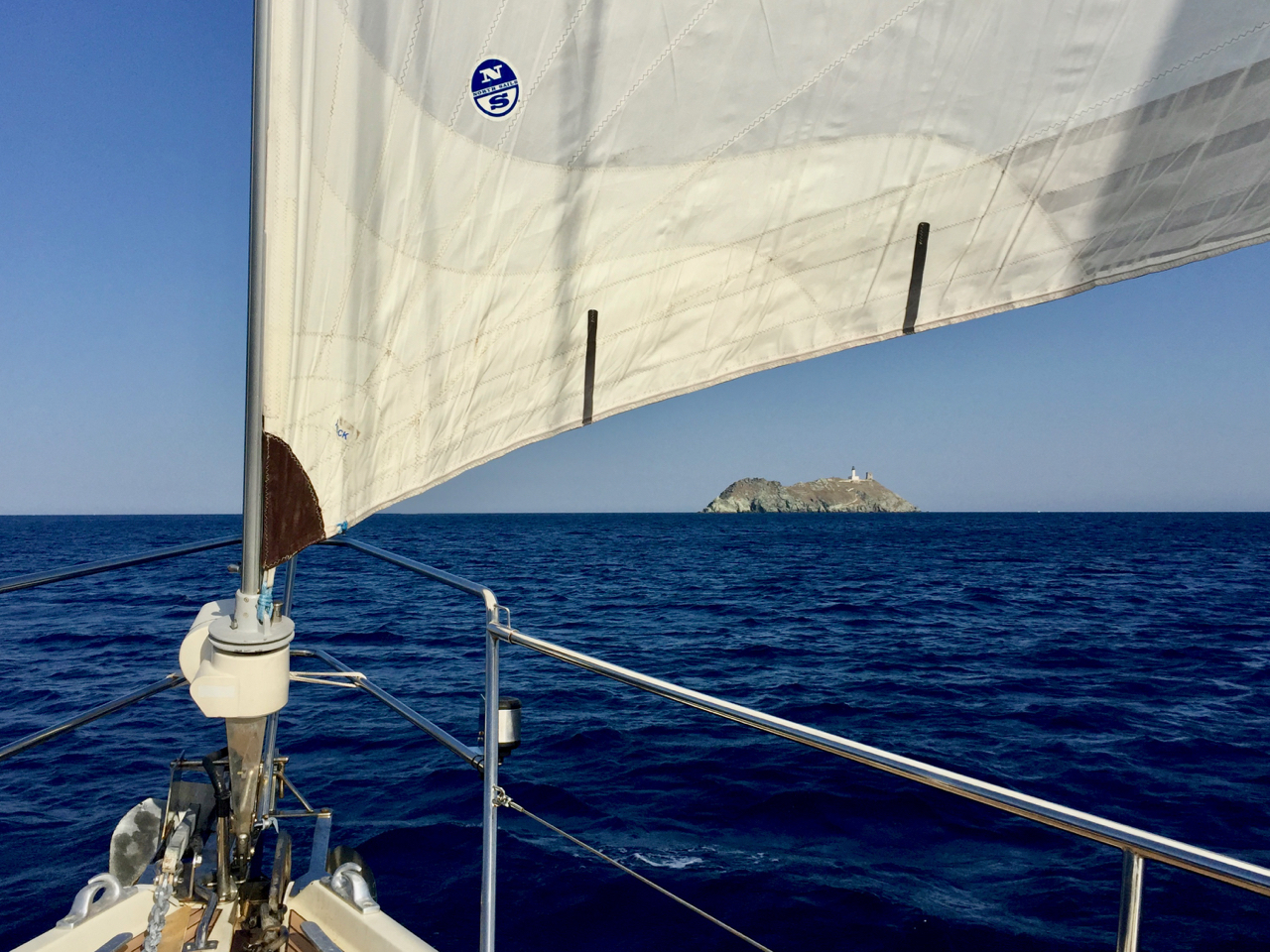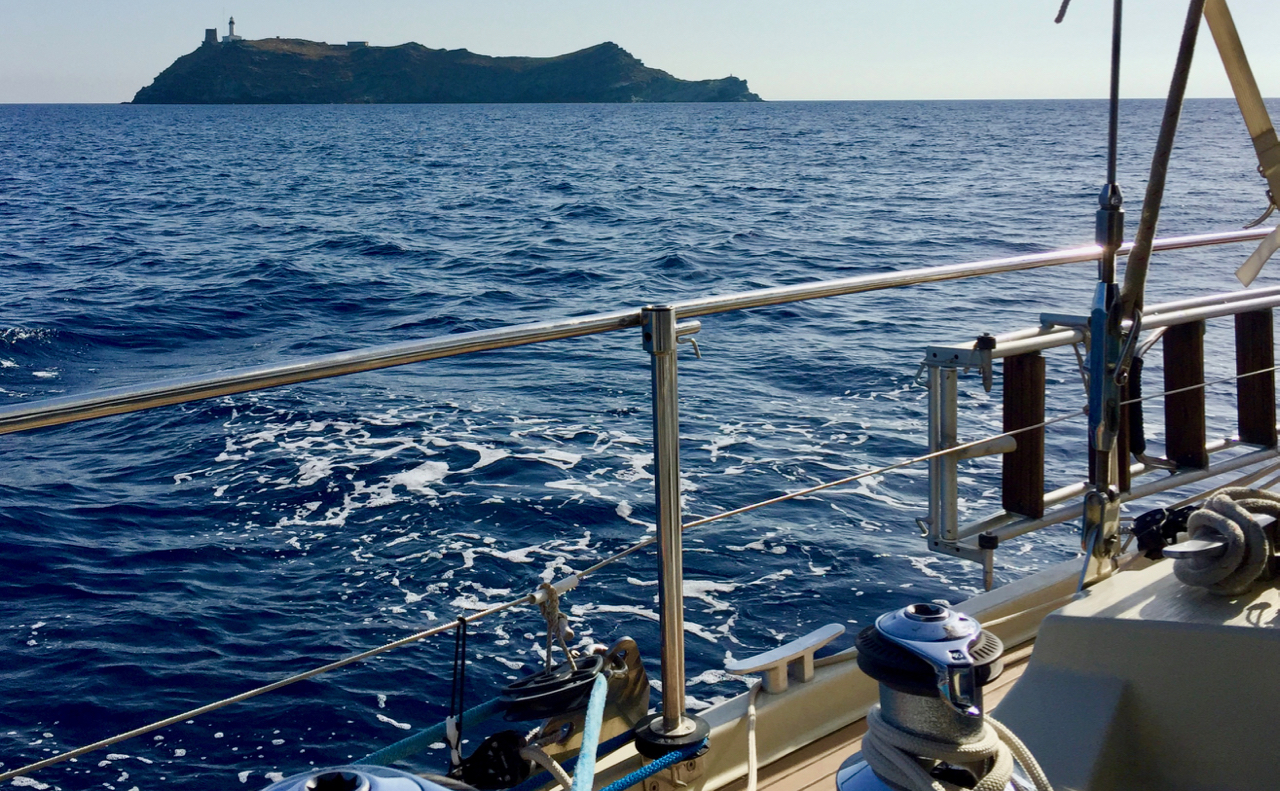Many famous sailboat races are run from an accessible harbor to some offshore, isolated island.
Take, for instance, the Fastnet Race, run since 1925 every two years: from Cowes, racers travel west almost 300 miles to Fastnet Rock, round it, and then back east to Plymouth. Peregrinus sailed by Fastnet in 2015.
Another well-known race is the Giraglia Cup, an annual event since 1953. The route, from Saint-Tropez (originally from Toulon), around Giraglia island, to Genoa. Giraglia island sits one mile offshore Cap Corse, at the very top of Corsica.
On July 31st, Peregrinus passed Giraglia, with its famous Genoese watchtower (built 1585), on its way west to Saint-Florent. Click for another picture.










